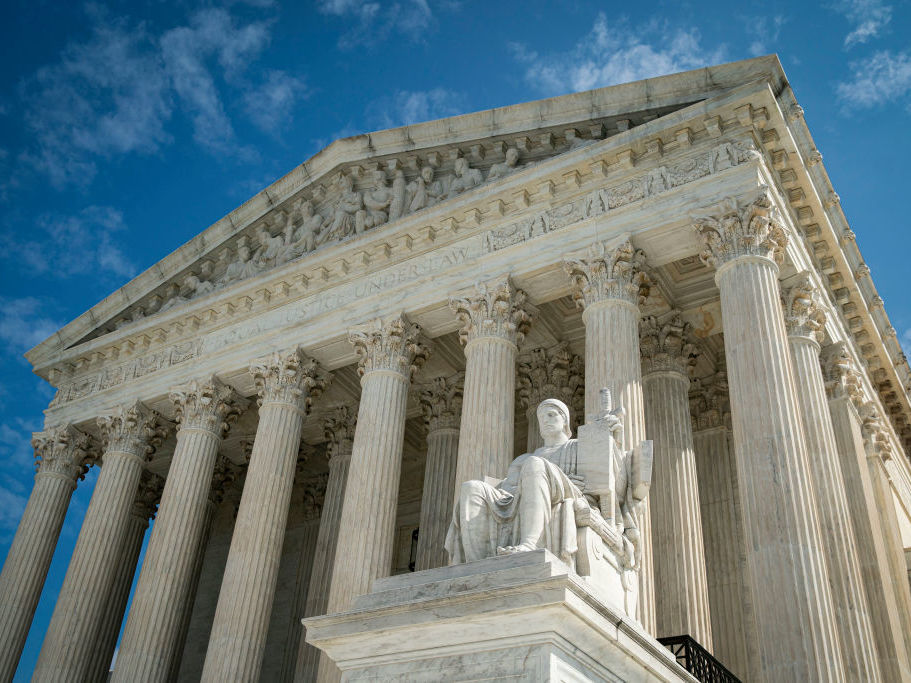U.S. Supreme Court Weighs in on Police Use of Force in Fatal Shooting of Ashtian Barnes
Al Drago
U.S. Supreme Court justices on Wednesday seemed in favor of reviving a civil lawsuit targeting a Harris County constable’s deputy accused in the 2016 shooting death of Ashtian Barnes. The move could set a legal precedent for the way courts review excessive force complaints against law enforcement officers.
Background of the Case
On April 28, 2016, Barnes was pulled over by Harris County Precinct 5 Constable Roberto Felix on Beltway 8 while driving a rental car with a history of outstanding toll road violations, according to court documents. Dashboard video footage taken during the interaction shows the deputy approaching the vehicle. The door is swung open after Felix orders Barnes to step out of the car. The officer can be seen in the video then drawing his firearm after Barnes allegedly put the vehicle in gear to drive.
The Shooting and Its Aftermath
Within seconds, the vehicle began moving forward as Felix clung onto the driver’s side door, almost instantly discharging his weapon and killing Barnes. Following his death, his mother, Janice Hughes Barnes, filed a lawsuit against Felix and Harris County, arguing that the deputy violated Ashtian Barnes’ Fourth Amendment right, protecting him from unreasonable search and seizure.
The “Moment of Threat” Doctrine
The lawsuit argues Barnes never presented a threat to Felix, and that he complied with all of the deputy’s instructions before Felix drew his gun, pointed it point blank range to Barnes’ head and began shouting expletives. During the minutes leading up to his death, Felix did not tell Barnes that he was being arrested, detained for a search, or suspected of violating any laws, the lawsuit documents assert.
The U.S. Supreme Court’s Ruling
The U.S. Fifth Circuit Court of Appeals determined the officer would be protected by the “moment of threat doctrine,” allowing justices to only evaluate his decision to shoot and kill Barnes in the second that he felt his life was threatened— not the moments leading up to the shooting.
Further Analysis and Implications
On Wednesday, Nathaniel Zelinsky, who is representing Barnes’ family in the civil suit, called the use of the doctrine legal amnesia, that “is incompatible with precedent, conflicts with common law and defies common sense.”
“Until now, respondents had embraced the ‘moment of threat’ doctrine, but, before this court, respondents have abruptly shifted position,” Zelinsky said. “They now argue that courts should look to what occurs before the moment of the threat and apply the law of self-defense and superseding cause.”
Conclusion
The U.S. Supreme Court’s decision will set a precedent for courts that review officer-involved shootings solely by the cop’s split-second decisions in the “moment of threat.” The high court’s ruling will have significant implications for the way law enforcement agencies across the country handle deadly force situations.
Frequently Asked Questions
Q: What is the “moment of threat” doctrine?
A: The “moment of threat” doctrine is a legal principle that restricts judges from reviewing the entire sequence of events leading up to an officer-involved shooting, instead focusing solely on the officer’s decision to use deadly force at the moment they felt their life was threatened.
Q: What is the significance of the U.S. Supreme Court’s decision in this case?
A: The U.S. Supreme Court’s decision will set a precedent for courts that review officer-involved shootings, potentially leading to changes in the way law enforcement agencies handle deadly force situations across the country.
Q: What are the potential implications of the U.S. Supreme Court’s decision?
A: The U.S. Supreme Court’s decision could have significant implications for the way law enforcement agencies train and respond to officer-involved shootings, as well as the way courts review and litigate these cases in the future.




